
12 Obstacles to the Internet of Things
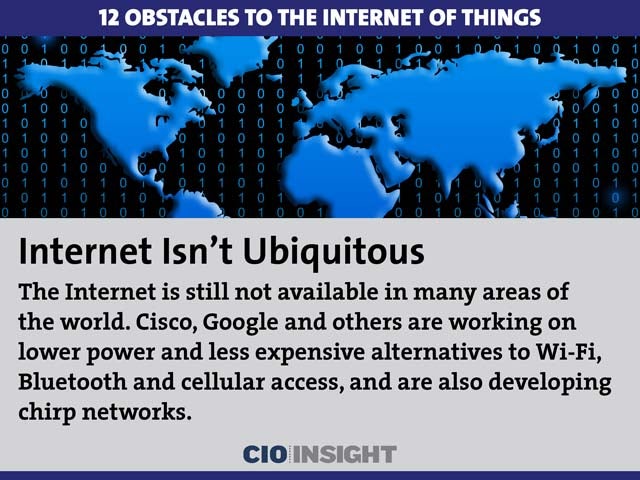 Internet Isn’t Ubiquitous
Internet Isn’t Ubiquitous
The Internet is still not available in many areas of the world. Cisco, Google and others are working on lower power and less expensive alternatives to Wi-Fi, Bluetooth and cellular access, and are also developing chirp networks.
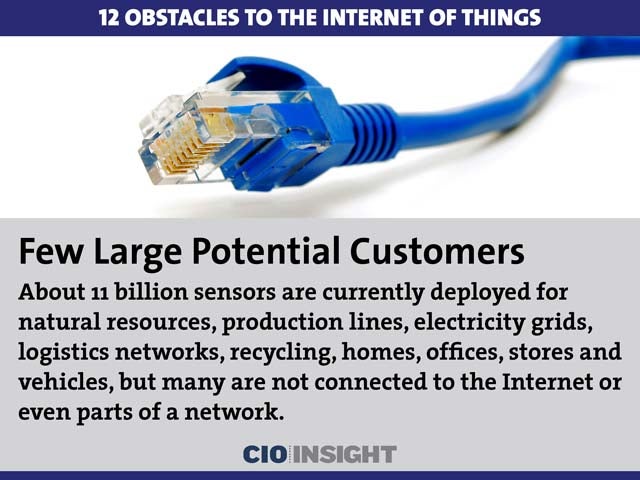 Few Large Potential Customers
Few Large Potential Customers
About 11 billion sensors are currently deployed for natural resources, production lines, electricity grids, logistics networks, recycling, homes, offices, stores and vehicles, but many are not connected to the Internet or even parts of a network.
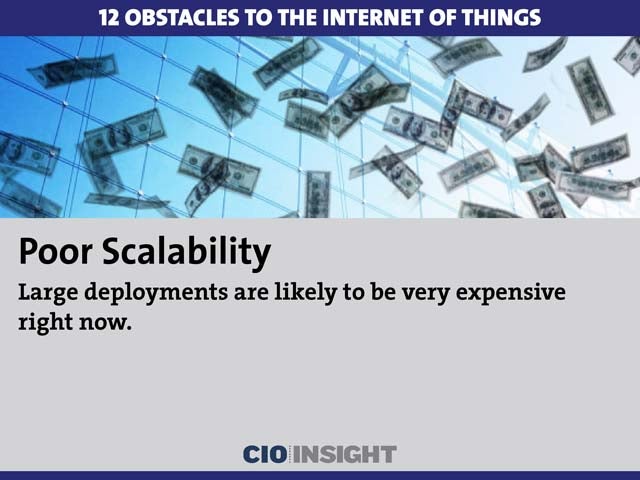 Poor Scalability
Poor Scalability
Large deployments are likely to be very expensive right now.
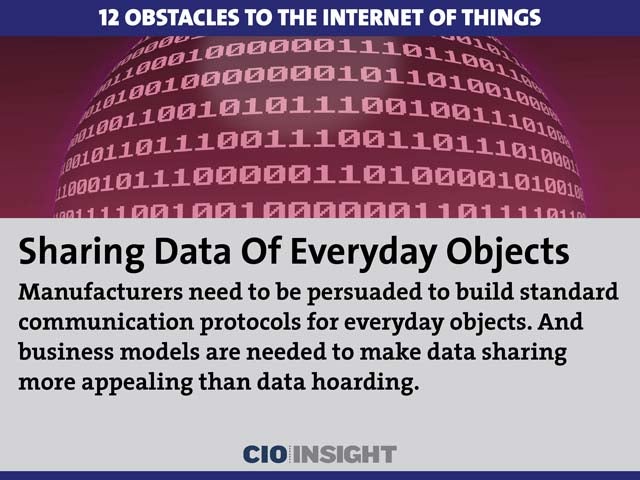 Sharing Data Of Everyday Objects
Sharing Data Of Everyday Objects
Manufacturers need to be persuaded to build standard communication protocols for everyday objects. And business models are needed to make data sharing more appealing than data hoarding.
 Would Success Mean Data Overload?
Would Success Mean Data Overload?
The role of processing at the device level is unclear, according to the IDTechEx report, as is the use of new middleware.
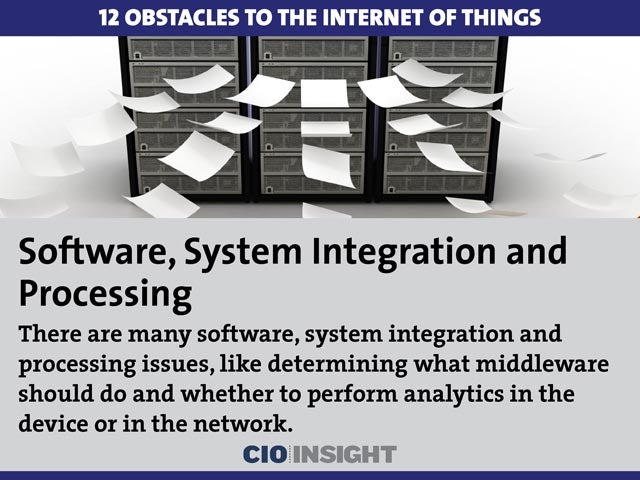 Software, System Integration and Processing
Software, System Integration and Processing
There are many software, system integration and processing issues, like determining what middleware should do and whether to perform analytics in the device or in the network.
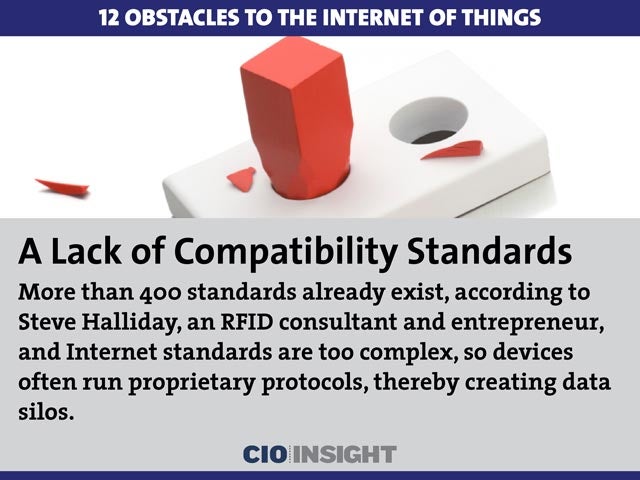 A Lack of Compatibility Standards
A Lack of Compatibility Standards
More than 400 standards already exist, according to Steve Halliday, an RFID consultant and entrepreneur, and Internet standards are too complex, so devices often run proprietary protocols, thereby creating data silos.
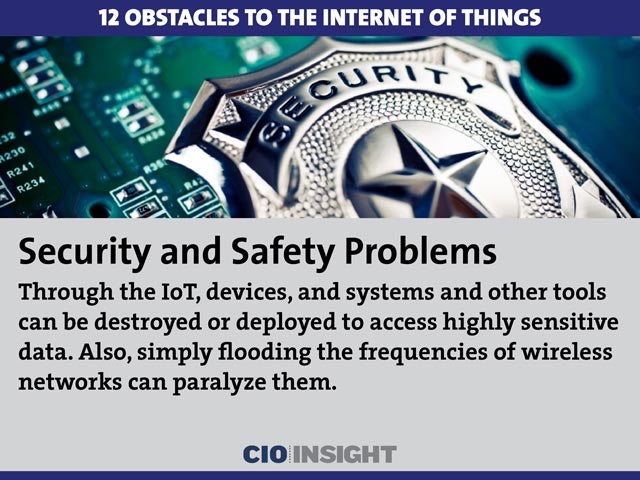 Security and Safety Problems
Security and Safety Problems
Through the IoT, devices, and systems and other tools can be destroyed or deployed to access highly sensitive data. Also, simply flooding the frequencies of wireless networks can paralyze them.
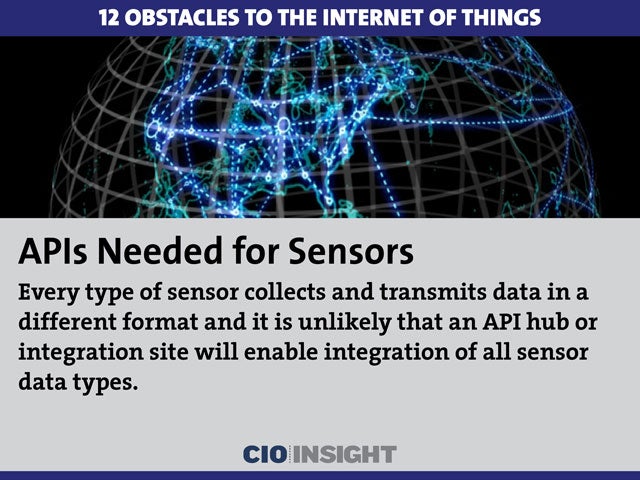 APIs Needed for Sensors
APIs Needed for Sensors
Every type of sensor collects and transmits data in a different format and it is unlikely that an API hub or integration site will enable integration of all sensor data types.
 Sensor Standards: What’s Being Done
Sensor Standards: What’s Being Done
Efforts are underway to integrate sensor data within different industries. Ford is working on Open XC, GE is working on Predix for industrial Internet censors and Boeing has an avionic sensor fusion platform for its military fighters. In addition, universities are proposing an open standard for automotive sensors called CloudThink.
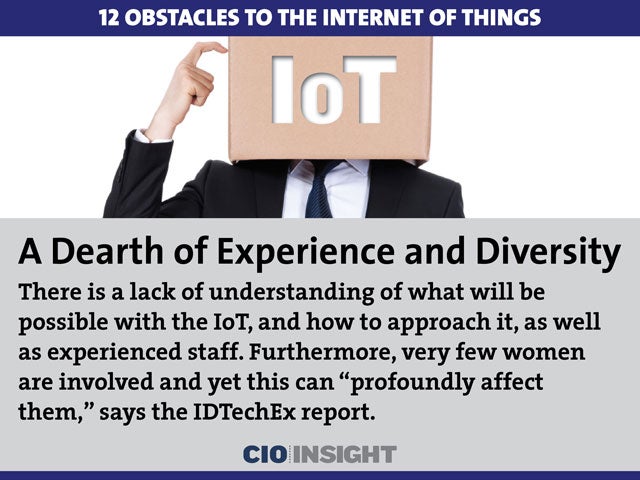 A Dearth of Experience and Diversity
A Dearth of Experience and Diversity
There is a lack of understanding of what will be possible with the IoT, and how to approach it, as well as experienced staff. Furthermore, very few women are involved and yet this can “profoundly affect them,” says the IDTechEx report.
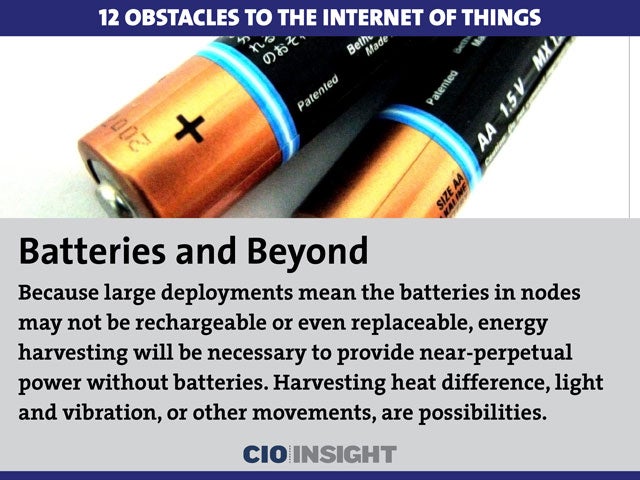 Batteries and Beyond
Batteries and Beyond
Because large deployments mean the batteries in nodes may not be rechargeable or even replaceable, energy harvesting will be necessary to provide near-perpetual power without batteries. Harvesting heat difference, light and vibration, or other movements, are possibilities.